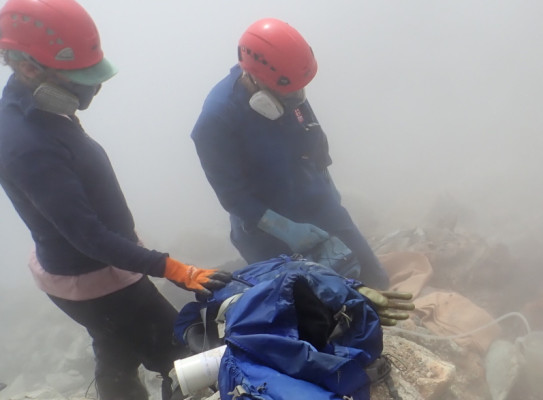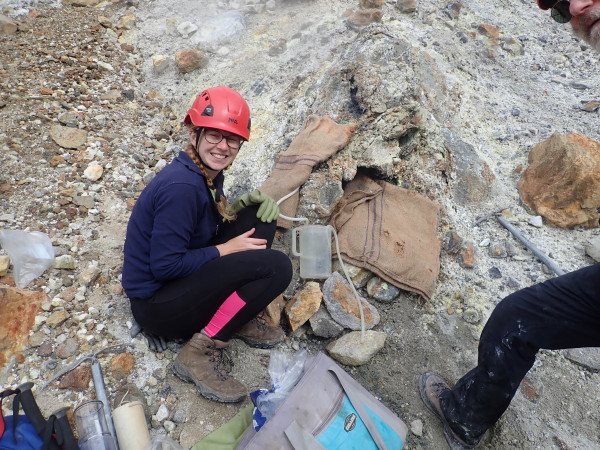Mini magma chambers to revolutionise volcano forecasting

A bold new research initiative aiming to transform short-term volcanic eruption forecasting could provide earlier and more accurate science advice to emergency managers for issuing warnings and establishing exclusion zones during volcanic unrest.
Led by GNS Science volcanologist Dr Ery Hughes, the Tracking magma depth using near-real-time volcanic gas chemistry for improved eruption forecasting project has just secured funding through the prestigious MBIE Smart Ideas Endeavour Fund.
The three-year project will simulate volcanic gas release by creating mini magma chambers – a laboratory and modelling approach that could unlock one of volcanology’s greatest challenges: determining how deep magma is beneath the surface in real time.
“Volcanic gases are the only part of the magma that can reach the surface before an eruption,” says Dr Hughes.
By recreating how those gases are released as magma rises, we can better understand what’s happening underground and give emergency managers a clearer, faster picture of eruption risk.

Forecasting volcanic eruptions depends on interpreting early warning signs such as earthquakes, ground deformation, and especially volcanic gases. These gases carry vital chemical signatures that indicate the depth of magma. The shallower the magma, the greater the likelihood of eruption. Yet, until now, scientists have lacked the tools to extract this information from real-time gas data.
The project will use data from past eruptions to recreate the gas release process in the lab, tracking how gas chemistry changes as it rises and interacts with water near the volcano’s summit. This will form the basis of a new model capable of estimating magma depth using near-real-time data from continuous GeoNet gas monitoring networks.
The research will be centred on Ruapehu – one of Aotearoa New Zealand’s most closely watched and potentially hazardous volcanoes – making it an ideal case study. But the model is designed to be adaptable for volcanoes worldwide.
Beyond improving public safety, the project has clear economic benefits. More accurate and timely eruption forecasting can help reduce costly false alarms and unnecessary evacuations, while also better protecting vital infrastructure, tourism assets, and primary industries. For communities and businesses operating near active volcanoes, more reliable warnings mean fewer disruptions and faster recovery when events do occur.
“Being able to estimate magma depth from gas data in real time is a game-changer,” says Dr Hughes. “It will help deliver faster, more accurate advice during volcanic unrest, ultimately supporting better decision-making and saving lives.”
-
How a mini magma chamber works
A miniature magma chamber is created inside a small capsule made of precious metal.
The capsule is filled with a powdered mixture that simulates the chemical composition of magma. Water and carbonate are added, and the capsule is then sealed tightly to prevent any leakage. It is subjected to high temperature and pressure, causing the powder to melt and form a gas-rich magma-like environment.
Once the experiment ends, the capsule is rapidly cooled. The contents solidify into volcanic glass (obsidian), which is then analysed. Curved features within the glass indicate that gas bubbles were present during the experiment.
-
Project partners
The project team brings together experts in volcanology, material science, and data science at GNS Science and the University of Canterbury with international partners from Caltech (USA), University of Bristol (UK), University of Manchester (UK), IPGP (France) and the University of Cambridge (UK) to gain access to novel and unique equipment overseas crucial to the success of the project.
GNS scientists involved in the study include: